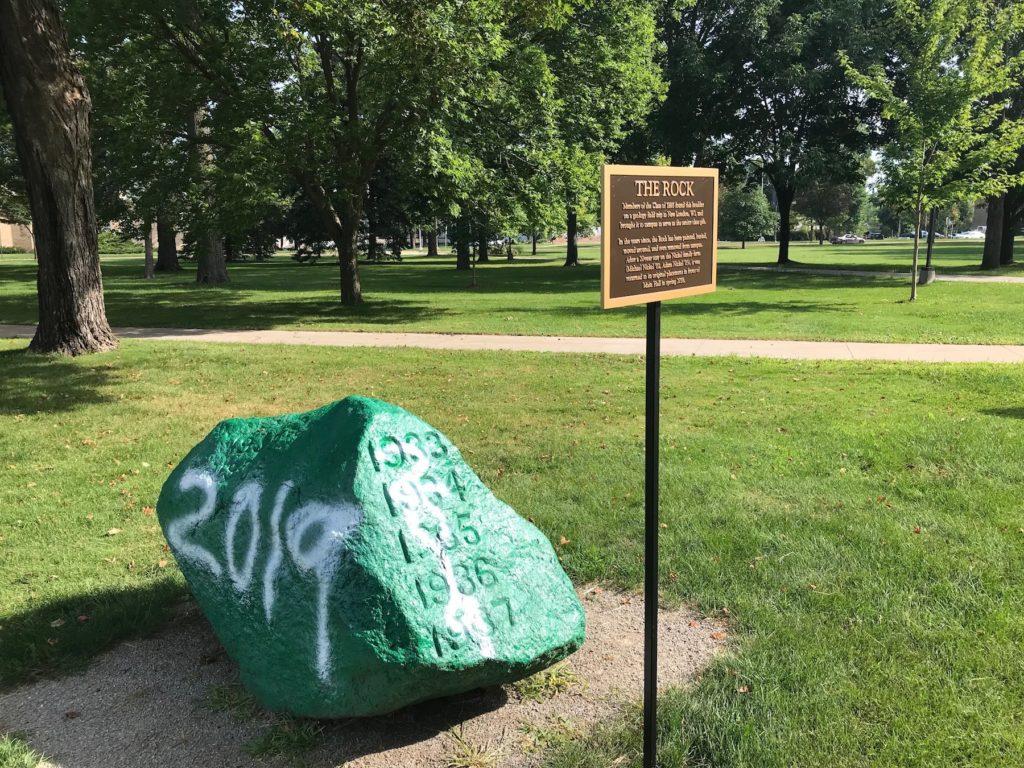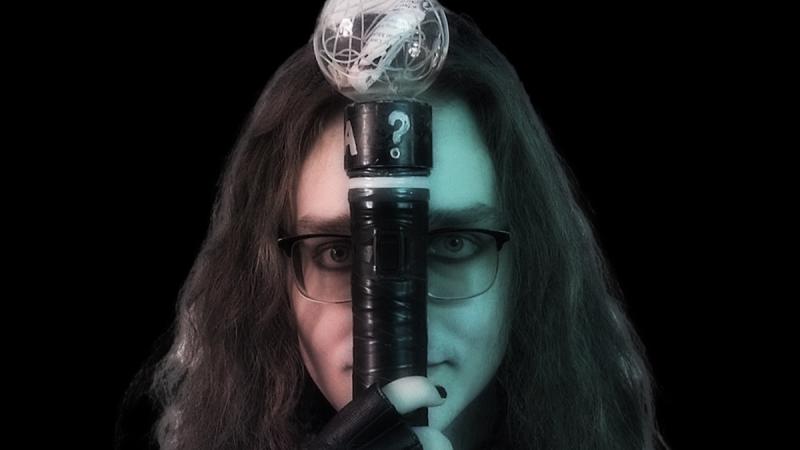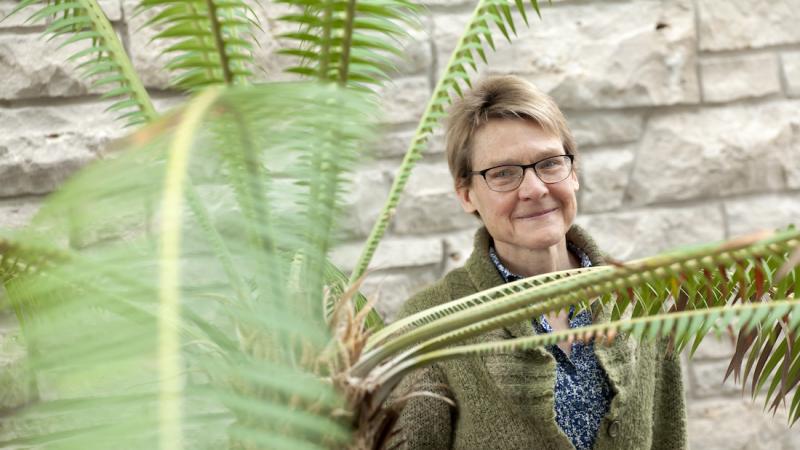The Rock, a 2-ton boulder resting peacefully on a stretch of lawn near the northwest corner of Main Hall, has finally had its long, strange history commemorated by Lawrence University.
Newly installed signage provides a nod to the 4,700-pound piece of granite that has been tolerated but rarely celebrated by the university that has been its home — mostly — since members of the Class of 1895 first hauled it to campus 124 years ago.
As campus traditions go, this is one that has had a bit of a love-hate relationship with the school. The Rock — not to be confused with a certain Hollywood celebrity of the same nickname — has been the subject of pranks, fraternity feuds and deep mysteries through the decades. It was returned to campus in the spring of 2018 after having gone missing for 20 years.
Now it’s home, and there’s nothing but love. Thus, the new signage recently placed next to the Rock:
“Members of the Class of 1895 found this boulder on a geology field trip in New London, WI, and brought it to campus to serve as the senior class gift. In the years since, the Rock has been painted, buried, moved around, and even removed from campus. After a 20-year stay on the Nickel family farm (Michael Nickel ’02, Adam Nickel ’03), it was returned to its original placement in front of Main Hall in spring 2018.”
The Rock, now painted green with the white lettering of the Class of 2019, has a history that started out combative, if all in good fun. Consider this dispatch in The Lawrentian in July 1895:
“Tuesday afternoon was Class Day and the big boulder of the Class of ’95 made its debut in college history. Somehow the seniors had an idea that the giddy juniors would not allow it to become a landmark on the campus and they watched all night till the day of its dedication, lest some festive ’96er should come along and carry the pebble off and throw it in the river.”
That would set a tone that would become part of the Rock’s tradition, one of mostly harmless rivalry and midnight escapades stretching across more than 100 years, frequently chronicled by The Lawrentian and sometimes The Post-Crescent.
Among the highlights:
With concerns the pranks had gotten out of hand, the Rock was moved to a mostly out-of-the-way spot near the Fox River in 1939; it would be returned to the Main Hall Green by ambitious students three years later.
It would go missing in 1964, finally retrieved in 1983 (it had been buried behind Plantz Hall by members of the Class of 1967, so, technically, it was still on campus).
And it would once again disappear in 1998, discovered 20 years later by students Sarah Axtell ’17 and Jon Hanrahan ’16, who had launched an entertaining, Serial-style podcast in hopes of solving the mystery of the Rock’s whereabouts.
In between all of that, the Rock was at the center of some much-chronicled campus rivalries and shenanigans that included students hiring towing companies to move the rock around campus in the dark of night, tossing it into the Fox River on multiple occasions, placing it in cement, and building a papier-mache replica that would appear one morning in 1957 on the roof of the former Stephenson Hall.
As the location of the Rock became a competition among fraternities, there was an unwritten rule that said wherever the rock was located on the morning of homecoming, that is where it would stay for the rest of the school year.
The 1998 disappearance came not long after the Phi Delta Theta and Delta Tau Delta fraternities had a bit of a public showdown, one that involved a front-end loader and required the dean of students to negotiate a compromise as local media looked on.

Class of ’95 (that’s 1895) on the Rock, which sits on the Main Hall lawn with newly installed signage
A search and a podcast
The Rock was then mostly forgotten for nearly two decades until Axtell and Hanrahan launched their No Stone Unturned podcast in 2016.
“Sarah and I were real dorks about Lawrence history,” Hanrahan said.
Their sleuthing eventually took them to a farm in Calumet County where the rock was found behind an old barn, the carved Class of ’95 in plain sight. It turns out there were a lot of complicated emotions tied to the Rock and how it ended up on that farm.
Lawrence and the Nickel family would eventually reach agreement that the Rock should return to the Main Hall green. It came home in 2018.
The ongoing fascination with the big boulder speaks to college students’ need to feel connected to their school’s history, said Hanrahan, who now works as an associate producer for New York Public Radio. He points to other schools with similar objects that have served as traditions that tie together generations of students — Rutgers’ cannon, Carnegie Mellon’s fence painting, and Northwestern’s own version of an oft-painted rock.
“There’s definitely that element of college students wanting and needing that quirky sense of identity,” Hanrahan said.
The podcast not only gave Hanrahan and Axtell the chance to fixate on Lawrence history — “This project was one of the first real moments when I fell in love with archives,” Hanrahan said — it also provided an opportunity to connect with alumni in a meaningful way.
“We got a sense of what life was like at Lawrence, especially in the ’90s, which was when the disappearance occurred,” Hanrahan said. “… We got a taste of life in the ’60s when the Rock disappeared then. That was very, very different from what life was like in the ’90s, which was also very different from what life is like in the 2010s.”
An uneasy history
Erin Dix ’08, the university’s archivist over the past nine years, said the many Rock-related pranks left some past university administrators uneasy. That’s why the new signage is notable.
“The administration at Lawrence has not always embraced the disruptive elements of the Rock’s tradition,” she said. “In 1939, college officials moved the Rock to the tennis courts at the bottom of the Drew Street hill to try to discourage the constant pranks. But students managed to hoist it back up the hill three years later. During the Rock’s most recent absence, I often heard the theory that the administration had purposefully removed it from campus.” (It had not.)
“My favorite anecdote about the Rock comes from a Post-Crescent article published when it was being exhumed from the parking lot behind Plantz Hall in 1983,” Dix said. “‘Richard Warch, president of the university, was there, eating a peanut butter and jelly sandwich from his sack lunch during the noon-hour event. “What a great day for Lawrence University,” he said with mock enthusiasm as a big P.G. Miron crane lifted the rock from the ground.’”
Hanrahan believes that kind of history should be celebrated. Students today should be aware of the school’s deep history and the student experiences that preceded them, even if it’s just a goofy old rock. That it has Class of ’95 carved into it is reason enough to acknowledge that connection, he said.
“That’s not 1995, that’s 1895, this unimaginably distant group of people,” Hanrahan said. “And it has these classes from the 1930s carved on the side as well. So, it’s a rock and it’s obviously this old geological artifact, but it broadcasts its oldness and it’s Lawrenceness right there on the side. It’s hard to look at it and not think of a Lawrence from 100 years ago.”

New signage now accompanies the Rock on the Main Hall lawn.
Axtell, now working in New York City for Accomplice the Show, an immersive theater company, applauds the university for formally recognizing the history of the Rock, calling it an important connection between generations of students.
“I don’t think the university can always take an official stance on some of the goofy things that have happened in the past, but I think the university should be proud of the ingenuity and creativity of its students,” she said.
“It gives people a reason to connect back to the history of the place. People need to pay more attention to the history of the areas around them, for better or worse.”




